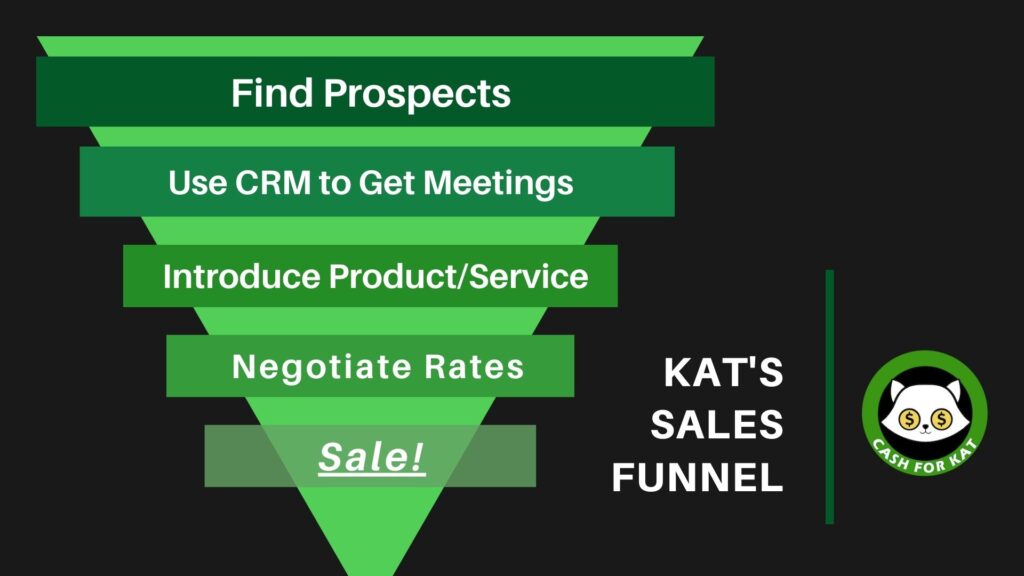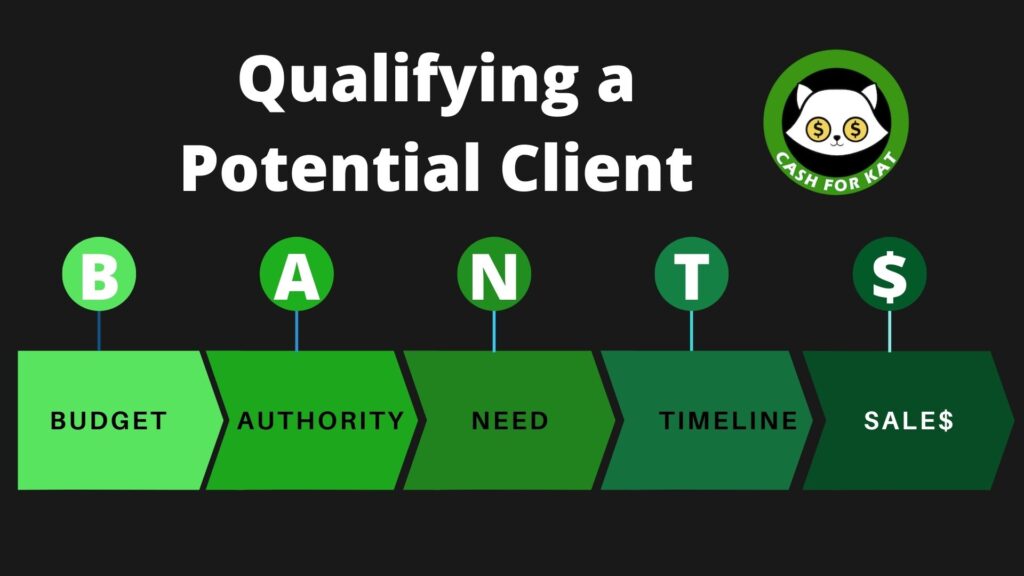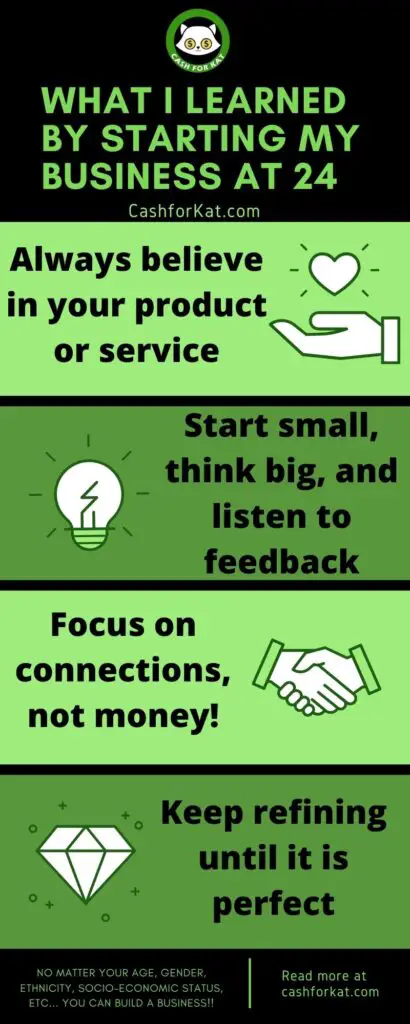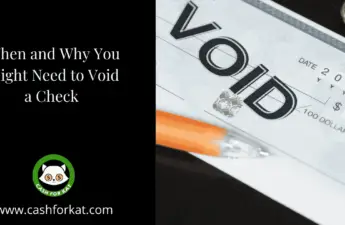
Have you ever dreamed of starting a business? Ever since I was little, I have had an entrepreneurial spirit. In fact, I always knew one day I would be my own boss. After all, I was helping my parents run their business since I was a kid!
My dad even encouraged me to start my first solo- business at the age of 10. He proposed the idea of investing my ice cream store tips and birthday money into a gumball machine.
Turns out, with a low starting investment of $200, you can easily make $1,000+ a year! Especially if you happen to place that machine at the front door of an ice cream store located across the street from a high school.
I quickly learned that the best money you will ever make is money that doesn’t tie you down to being in a particular location. So in this post, I am going to share how I was able to start my first real business at 24, how I grew it to a full-time income in one year, and share some ways that you can help your new business grow.
Be sure to subscribe for updates as I grow my blog and business. I’m going to be sharing all the juicy details like my Adsense earnings and annual income!
How I Gained the Skills to Start a Business at 24
As I grew up, I naturally gravitated towards careers that do not cap your earning potential. I worked in retail stores that paid a commission during my first few years of college.
During my final years of uni, I would work as a student caller for my university’s fundraising programs. I would earn bonuses based on how much money I raised. My biggest commission check during college was for $700 and that was in addition to my hourly wage.
It was at these kinds of jobs where I learned the basics of selling. I also developed a passion for connecting with people. It was no surprise that after college I would start working in sales for various tech start-ups in San Francisco. Not only was this experience massively valuable for my career growth, but it also gave me the necessary skills to find and obtain my own clients.
When I took time off to travel the world at 23, I knew I wanted to build some sort of income that was not tied to a 9 to 5. That desire to make an online income plus a passion for personal finance is why I started Cash for Kat.
I knew that blogging would take a long time to generate an income. As a result, I knew that if I wanted to travel for more than a few months I would need to leverage my sales skills into generating business for myself.
Starting a Business Without a Product
I quickly realized that the fastest way to an online income would be to offer small businesses a necessary service at a competitive rate. Ideally, this would be a service that would be simple to execute and obviously not rely on my presence in a particular timezone or a physical product.
The first thing that came to mind was working as a virtual assistant for start-ups. Thanks to my background in sales, I was able to put together an ideal client profile for people that might be interested in my services. A client profile is a list of ideal characteristics that a person/organization that you would like to work with has and is the best way to build a business.
Many people that have a business idea use the “spray and pray” approach to gaining clients and sales. This method relies on contacting everyone under the sun and praying that they will be interested in your product/service!
It is basically a numbers game where, if you ask 1,000 people… eventually one will say yes. Unfortunately, you are probably going to annoy a lot of people in the process, waste a lot of time, and see very minimal results.
Understanding Client Profiles
A client profile saves you time because you are able to narrow down your search to people who are more likely to be receptive to your outreach and you are able to create messaging that is relevant to them.
I wanted to make sure I found organizations that were small enough where the CEO would be very busy and were likely doing everything themselves due to lack of funding. Of course, they would need some funding so that I would be able to make sure I got paid!
With this in mind, I knew that reaching out to large organizations was going to be a waste of time because they could afford an in-person assistant and there would be a lot of competition. Instead, I researched start-ups that had less than 50 employees and had received some sort of venture capital funding.
I also looked at postings on job boards so that I could see which small organizations were already looking for similar services, which indicates they already have a need and budget.
Starting a Business Sales Funnel

Once you have done your research on potential clients, which we refer to as ‘prospecting’ in the sales world, you are ready to start building a sales funnel. A sales funnel is the process that your prospective client will go through as you try to close a deal.
When you first start reaching out, you will need to have a long list of qualified people who may be interested in your product or service. Of course, no matter how fantastic your business idea is… most people will not respond. This is human nature and nothing to take personally!
The goal is not to get a lot of responses. You just need to get a few quality responses that have a high likelihood of purchasing your service. This is why you need to make sure you are reaching out to your ideal clients!
Utilizing Excel to Build Your Funnel
I recommend making a list of at least 50-100 prospects to put into an Excel spreadsheet with their name, email, company, etc (saved as a CSV). This will be useful when you start reaching out to them in the next step! I would also recommend looking into gaining project management skills, as this can help you with both your sales outreach as well as managing your new clients.
Once someone agrees to a meeting, you will have a much higher chance of closing a deal. You should already know they have the budget for your services, the authority to buy it, a need for help, and a timeline for when you’ll start. In the sales world, this is referred to as the BANT sales method which many organizations use to qualify and close business-to-business sales.
If you are interested in learning more about sales techniques, building businesses, and multiple income streams, be sure to subscribe!

Organizing Business Outreach
There are many sales tools available that are cheap or free. The most important of which is a Customer Relationship Management tool (CRM). A CRM is an online database that helps you see your sales pipeline. It also helps you keep track of people you’ve reached out to and automate tasks like emails.
Instead of keeping track of your outreach on the Excel sheet, you can upload all of that information into Insightly. They help make the process much more organized. It’s like the modern version of a Rolodex and is a huge game-changer for doing organized outreach.
One of the most popular CRMs is Salesforce. It is very expensive though, because it is more for established organizations. This would be companies that have a defined sales process and a big budget ($1k+ per person!).
How I Used Insightly CRM
For the purposes of a small business, I recommend utilizing Insightly’s free CRM. You are able to integrate this tool with your email account. It helps you keep a log of what you emailed, when you need to follow up, and any responses you might receive.
I use Insightly for my business and even for my blog! I keep the information for blogs that I want to partner with in Insightly so that I can use the methods outlined in this post to find guest posting opportunities!
As my blog grows, I will also use Insightly to keep track of any companies I want to reach out to for partnerships. I love doing this kind of outreach because it ensures that I am working with people and organizations that align with my values!
I even have some email templates that I created for my blog outreach and the outreach that I did to gain clients for my business. You can sign up to receive them for free via email here.

The First Big Business Project
I landed my first freelancing gig in less than two months using the strategy above. Like many positive occurrences in my life, it unfolded unexpectedly.
One of the prospects I interviewed with for a virtual assistant position initially rejected me. Despite this setback, I maintained a positive approach, recognizing the value of learning and growth. I sent a thank-you email, seeking feedback on areas for improvement. The response revealed the decision was based on the candidate’s years of experience as an assistant, something I lacked.
He praised my follow-up and attention to detail during the interview process, attributed to my CRM. A month later, expressing continued interest, I contacted him. I thanked him again and mentioned my ongoing job search, offering to discuss any opportunities.
Less than a week later I had a meeting with someone who he referred me to and that person became my first big client! And that is how Rucker Sales Consulting was born!
How to Grow Your Business By Refining Your Product/Service
I never expected to start a business at 24. Even after securing my initial projects, I considered it freelancing, as I found clients on Upwork. Starting at $15 per hour, my rate increased to $30 within a few months.
Everything shifted during a referral call for a virtual assistant role. It turned out he needed help moving his client list to Insightly, a task for sales developers, not virtual assistants. Recognizing the opportunity, I pitched the project at a higher rate.
Realizing the potential beyond assistant tasks, I adjusted my business offerings, targeting clients needing basic sales help. Leveraging my experience, I demonstrated value, making it easier to attract clients.
In less than a year, I landed a project covering living costs and allowing me to save $1,500+ monthly while traveling. This, alongside other income streams, showcases the success of my adapted business approach.
And that is just one of my many income streams! I actually wrote a post on how I was able to save $1,000+ in a month for the first time while I still in college!
What I Learned by Starting a Business at 24
Starting a business at any age is no small feat! What I do know is that anyone can do it regardless of age, gender, ethnicity, location, socio-economic background, etc. We have access to knowledge and a whole new way of making a living via the internet.
Stop thinking and start doing!

If you are interested in starting a business but aren’t sure about how to get started, I’d be happy to discuss your ideas in a free 15-minute call.
You can reach out to me via Twitter (fastest response) or through my contact page. If you aren’t ready to launch, be sure to subscribe so that you stay up-to-date on my latest posts!
Have you thought about starting a business? How long did it take you to gain your first big client?


I must say that you have a great strategy: “Stop thinking and start doing!” It is very valuable that you share your experience.
Thanks, Bill! You are totally correct, I try to take action on things fast. So much time is wasted thinking about things and you often learn more quickly via trial and error!
Very useful and informative. Thanks for this
would love to get some advice too..
Thanks for stopping by! Feel free to ask any questions, I am happy to provide more info in the comments or in a follow-up post!
What really impressed me was how you were able to keep your eyes objectively and strategically on your whole business while also getting to the nitty gritty of calling on clients and executing work that you sold. That’s a true business owner mentality! Too many people sell then do, then pipeline is dry, then sell then do, then pipeline suffers again…I also love how you recognized when to raise prices, change offerings and change your brand. Finally, I love how you started with a service — I’m a consultant so agree 100% that the no inventory, no start up material, start right away is the best. Congrats!
Thank you! It is a juggling act for sure! I am trying to get post #2 up later today, it goes over how I sourced my second client via a friend and hiring my first employee! I love consulting, I am glad I didn’t wait until later in my career to get started. Thanks for your kind words and for stopping by Caroline 🙂